“Nothing sucks like Electrolux” was the translation of the slogan of a marketing campaign launched by the Swedish vacuum maker Electrolux in the United States. The Swedish company wanted to highlight the exceptional power of the vacuums they produce when introducing them in the United States. But, unfortunately, they have fallen for American slang, an aspect that is closely connected to the culture of the country and should have been considered when creating their content localization strategy.
A successful content localization strategy is developed with a main goal in mind: this has to sound local. And, definitely, the Swedish company appeared as a mere outsider to the American audience.
If you don’t want this to happen to you, read along to know how to successfully build a content localization strategy that leaves no room for such mistakes.
In this blog post, we offer a detailed guide to creating an effective content localization strategy to support your business’s global expansion efforts.
So, let’s get started.
A content localization strategy is a plan designed to adapt content, products, or services to fit the language, cultural preferences, and social sensitivities of a new target audience in a way that builds trust and connection with your brand.
A successful content localization strategy can help businesses deliver multilingual content that resonates with diverse target audiences. This empowers them to expand their global reach and, hence, increase their customer base, conversion rates, and definitely their revenue. A challenging task that can yet be achieved with the help of a professional translation and localization company.
But before we delve deeper into our guide, we need to make sure first that you can tell the main difference between translation and localization.
Localization vs Translation
Outside the industry, the two terms localization and translation are often used interchangeably. However, we know there is a vast difference between them.
Translation is the reproduction of a source language content into a target language. On the other hand, content localization is the process of adapting and transforming content for the target language recipients. Beyond language considerations, it essentially takes cultural and contextual nuances as well as target users’ expectations into account.
While translation is designed to convey a message to linguistically fit a new audience, localization recreates a whole experience not just linguistically but also culturally.
You can say that translation is one aspect of localization. So every process of localization must involve translation, but this does not apply to translation where localization might or might not be involved.
To give an example, when translating a sentence that includes the US currency, using only word-to-word translation will result in using the same currency even when introducing the information to the Spanish-speaking Mexican market for instance. On the contrary, relying on localization will result in a more accurate and culturally-relevant translation that replaces the USD with the Mexican Peso MXN.
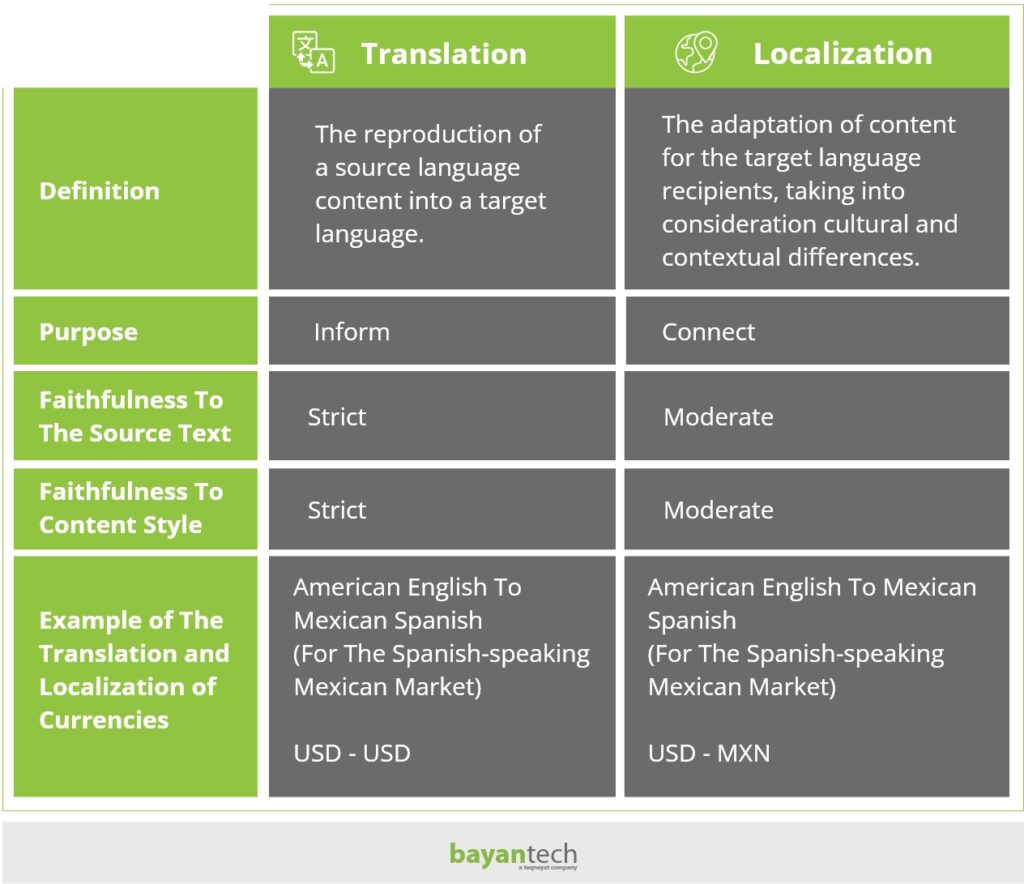
4 Key Benefits of A Successful Content Localization Strategy
One thing you need to have in mind when tapping into international markets is that global customers are diverse in many aspects including wealth, lifestyle, ethnicity, and values. One size no longer fits all, and if you want to build genuine connections with your new audiences, you have to tailor your services and content in a way that engages, sometimes entertains, but always motivates and inspires.
A thorough content localization strategy is the best way to achieve this, for it will open a wide range of opportunities for your business. Let us have a look at some of the key benefits you can get from building a successful digital content localization strategy.
Boosting Sales
According to research, there is a significant link between sales and the creation of common value between the seller and the consumer, and culture is one of the key aspects that influence the formulation of such value.
When you communicate with your customers in a way that reflects how considerate you are of their culture and contextual preferences, you succeed in creating this common value between you and them. Your brand starts to appear more involved in their local community, and this drives them to choose you over your competitors.
To give you an example, let us have a look at what Boyd Rogers, VF’s president for the supply chain has reported on the impact of localization strategies on sales. Rogers stated that localization can improve sales by 40% to 50% while reducing store inventories and markdowns. And according to him, it is one of their most powerful competitive advantages.
It won’t be an overstatement to say that content localization is a revenue driver. The more you localize and produce culturally-relevant content, the higher your sales and the better your revenue soar.

Increasing Brand Loyalty
One of the first factors that make entering new foreign markets sound daunting is cultural differences. But what if you can turn cultural differences into an advantage that drives your customers to be loyal to your brand and create a long-lasting bond between you and them?
Localizing your content to meet the cultural and contextual nuances of your target audience can result in a significant increase in their loyalty to your brand. Making a purchase on your website does not mean that they are going to do it again.
But if you give them an unforgettable, personalized user experience that makes them feel what you offer is created specifically for them, they are more likely to buy from you over and over again. It is only through localization that you can foster your customer loyalty and trust.

Increasing Customer Satisfaction
Speaking to your customers not just in their native language but also in a culturally-relevant way can have a significant impact on increasing their satisfaction. What your customers remember after dealing with your business is the experience: how you made them feel and whether or not they felt your business is connected to them. And localization can ensure that such an experience is a seamless, personalized one that strikes a chord with your target customers.
If all your customers care about is the price of your services, it means that you are not offering them anything else. A satisfied customer won’t only care about how expensive or affordable your product is, they will always value the overall experience you offer. By localizing your content, you are improving the user experience, which will potentially increase your customer satisfaction. And this gives you a competitive advantage.

Maintaining Brand Consistency
Brand localization leaves no room for miscommunication; it ensures that your business message is delivered to your audience just as you intended. With a solid multilingual content localization strategy, your brand message remains consistent across all markets and marketing channels, and you get full control of it.
This consequently contributes to improving your brand image and brand equity, increasing brand awareness, and ensuring that all your brand elements are intact.
The importance of ensuring brand consistency is that it also builds trust, maintains integrity, and enables you to live up to your client’s expectations. It is the root of your brand identity; after all, a brand is a brand when it is consistent.
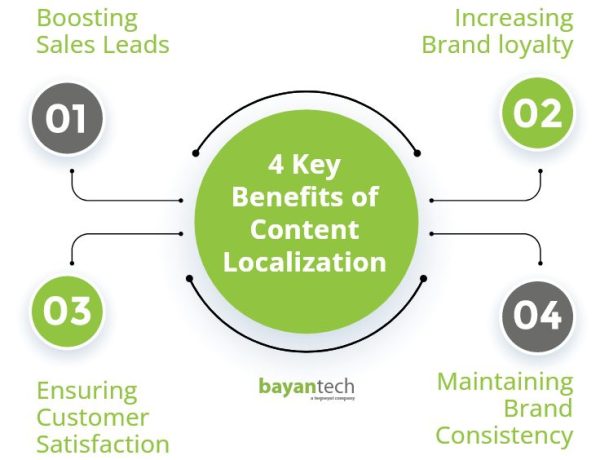
Are You Looking for Content Localization Services and Don’t Know Where to Start?
We’ve got a goal-oriented resource for you.Developing A Global Localization Strategy
Want your localization efforts to pay off in global markets? An effective content localization strategy can grant you this. Localization decision-making is not an easy one because you will always be considering the money factor in contrast to the benefits you will get in the end.
You definitely do not want all your efforts to go down the drain. And, hence, developing an effective content localization strategy is a must. How good your content localization strategy is determines whether it will make or break your brand.
For your content localization strategy to be successful and drive the desired end results, it needs to consider factors such as cultural nuances, religion, language, values, customs, and local regulations. Here is a glimpse into what you can do to formulate your localization strategy.
- 1. Define Your Localization Goals
The first step in developing a global localization strategy is to define your objectives or goals. Ask yourself about what you want to achieve with localization. Maybe you want to expand into new markets and boost your international sales. And you may also be aspiring to increase your customer base. Defining the objectives of your localization plan will help you to easily assess the success of your localization strategy.
You need to make every step of your localization strategy contribute to your overall goals. Maintaining this sharp focus on what you want to accomplish will ensure that your strategy remains focused and well-targeted.
- 2. Do Extensive Market research
Studying your market extensively is your key to internationalization, for it is the best way to deliver content that impacts and makes a difference. You need to conduct in-depth research to understand your local market’s lifestyle, purchasing habits, payment preferences, language usage, etc.
You might also need to study your market’s segment demographics including age, ethnicity, gender, and income. This will give you an overview of how you can appeal to your audience and even identify whether or not they fit to be your target audience.
According to Harvard Business Review, VF Corporation makes a good example of developing a successful localization strategy. VF Corp depends on elements like geodemographics and lifestyle data in addition to extensive consumer research to develop their localization strategies. And this has helped them find out more about their market preferences and ultimately boost their sales.
- 3. Conduct A Cultural Analysis
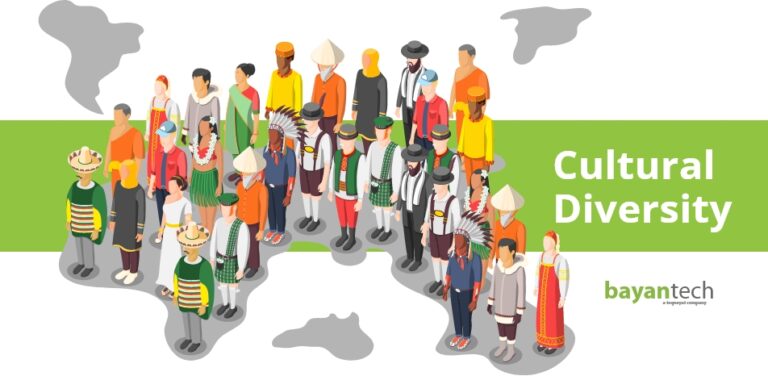
Adapting your content to fit the culture of your target audience should be your main focus, for this is what will help you to create the desired bond between them and your brand. To succeed in doing this, conducting an in-depth cultural analysis is a must.
One thing you need to have in mind is that culture adaption involves several levels. You don’t just adapt your text content but localization also entails localizing imagery, symbols, colors, and much more. Besides linguistic considerations, a well-tailored content localization strategy considers aspects such as
- Cultural Specifics
- Slang
- Idioms
- Symbols, Images, and Colors
- Trends
- Regional Differences
- Currencies and Payment Gateways
- Date and Time Formats
- Laws and Regulations
How do you expect to do this if you do not know the culture of your market?
Coca-Cola has succeeded in becoming very popular in China thanks to its exceptional, well-targeted localization strategies. You must remember Coca-Cola’s “Share A Coke” campaign. While the campaign included using popular names for their packaging in Western markets like Europe and Australia, it has shifted to using nicknames in China instead to fit the Chinese culture.
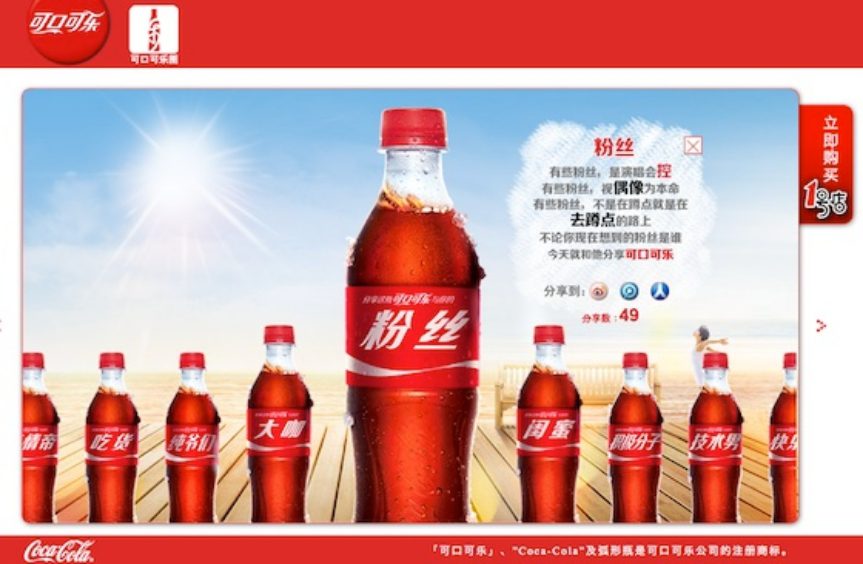
In China, using nicknames is more popular than calling everyone by their first name. And that is why Coca-Cola’s packaging in China featured nicknames such as “cool dude,” “fans,” and “artistic youth,” among many others. We are talking here about one successful campaign but in fact, Coca-Cola has even changed its global brand name to Ke Kou Ke Le, which means “tasty fun” in Chinese, to be suitable for the Chinese market.

Being highly considerate of the culture and the specificities of its target market and doing everything it takes to fit its audience is the main reason behind Coca-Cola’s success in China.
- 4. Determine The Channels You Need To Localize
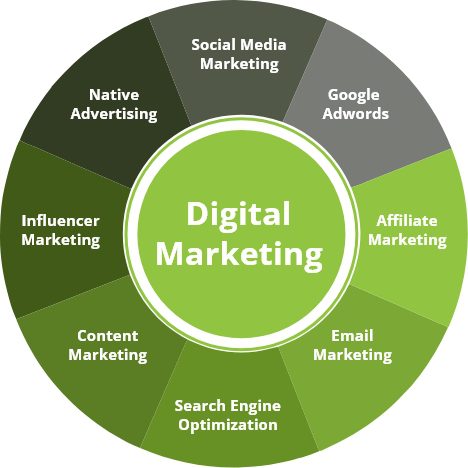
An important thing you need to do when setting your localization strategy is to prioritize the channels you need to localize according to your audience preferences. Analyzing your local market’s media consumption habits can help you improve your marketing strategy and select the most appropriate marketing channels to resonate with your target audience.
Find out which platform they spend most of their time on. If it is Facebook, for example, you will need to shift your marketing efforts there. The same goes for platforms like Youtube and Twitter.
You will also need to check which platform your local competitors are most active on. It will give you an idea of the amount of interaction they get on certain platforms which can help you make a thoughtful decision and narrow down the channels you need to localize.
This step is important as it will help you save time and effort and speed up the impact of your localization strategy.
- 5. Decide Which Content To Localize
As a general rule of thumb, not all content is important to localize. You need to focus your attention on content that can help you operate in multilingual target markets, increase your brand awareness, attract more audiences, and drive higher conversion rates. This might include localizing your brand content, marketing content, legal content, back-end content, and technical content, depending on your market need. You can localize the following types of content:
- Website content
- Social media accounts
- eBooks
- Videos
- Legal content
- Blog posts
- Infographics
- Posters
- Magazines
- White papers
- Landing page
- Case studies
- Reports
- Email marketing
How To Measure The Success of Your Content Localization Strategy
You have invested money and effort to develop your localization strategy and set your localization goals. The next step is to determine how effective your strategy is. The following metrics will help you measure your localization success, and you can compare the results with your pre-localization benchmarks.
User Experience UX Metrics
- Customer Feedback
The feedback you collect from your customers is very significant when it comes to measuring how successful your localization strategy is. They have interacted with your localized content and services, and how satisfied they are with the experience you offer does really matter in measuring the success of your localization efforts. You will get to know more about the areas that resonate with your customers and those that need improvement.
You can run a survey on your website to ask your audience how satisfied they are with their experience on your website and whether or not your localized content sounds local and natural to them. You can also request their suggestions to improve your content.
- User Engagement
Your customers will engage more with what you offer if it is satisfying and relevant to them. So, one of the key metrics to measure your localization effectiveness is to evaluate your user engagement. You can track bounce rate, pages viewed per session as well as the amount of time users spend on your website.
You can also track social media engagement metrics like your followers’ rate, and the number of likes, comments, shares, or clicks per post. Tracking these engagement metrics can help you to readjust your localization strategy to meet your audience’s needs. Similar to customer feedback, it will make it easier to find out the areas you need to improve in your localization strategy.
- Conversion Rates
There is a close connection between user experience and conversion rates. How satisfied your customers are will be reflected in the actions they make on your website. Higher conversion rates mean that your localization efforts were not in vain.
This is because if your content succeeds in creating the desired connection with your audience by being fully adapted to their language, culture, and local community, it will consequently drive the desired conversion.
Wanna know more? Find some of the most helpful localization strategy tips in our previous blog.
Sign up to our newsletter to receive the latest blogs and news.
Why Partner With A Professional Content Localization Service Provider
As we mentioned previously, your localization strategy can make or break your brand. And that is why partnering with a professional content localization service provider is very crucial to avoid any sort of miscommunication with your audience, which costs a lot by the way. Only a professional language service provider will give you access to all the resources you need to enter a new market from native professional translators and localization experts to translation and localization tools and much more.
And this is what bayantech can offer you. We are an ISO 17100 and ISO 9001 certified content localization service provider, offering expert localization services across 100+ languages. With a network of industry-expert native translators, localization specialists, and culture experts, who are all located in literally every locale you might want to target, we assure you that our localization services are unrivaled.
Benefit from our rigorous quality assurance process and our high-end localization testing tools to deliver to your audience professional content with world-class quality.
Contact us today to learn more about bayantech, our services, and how we can help you with your upcoming project.









